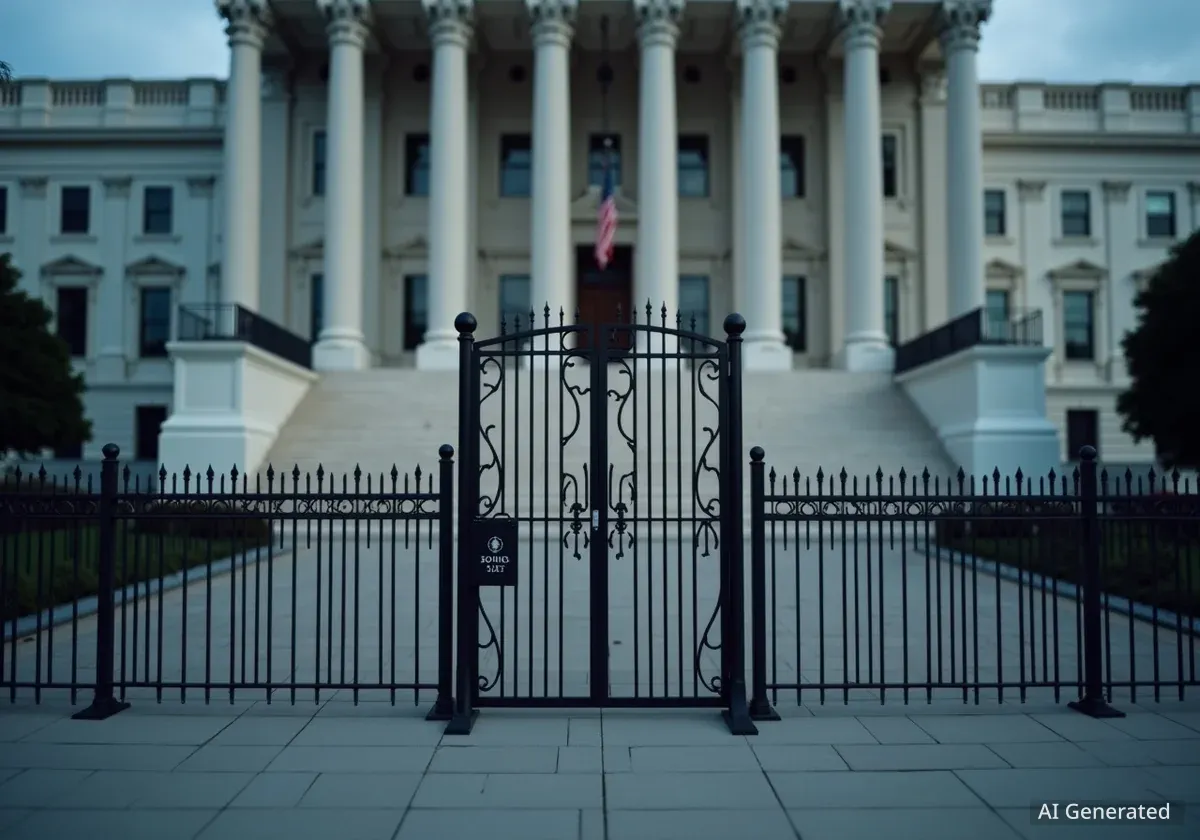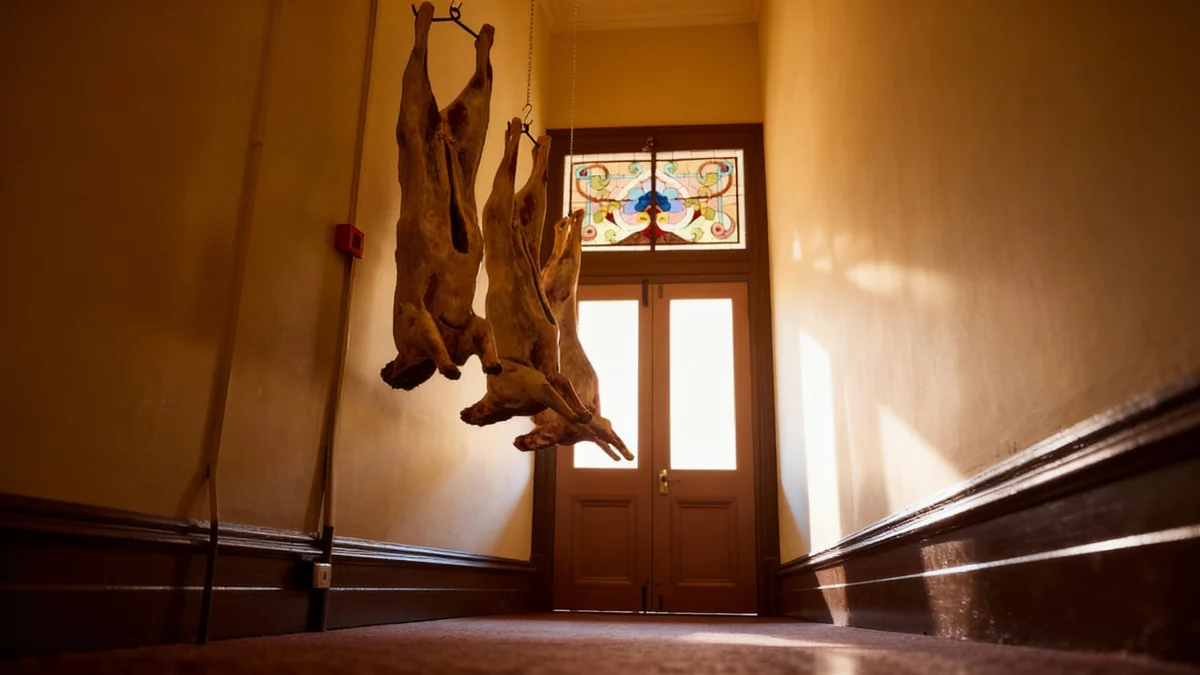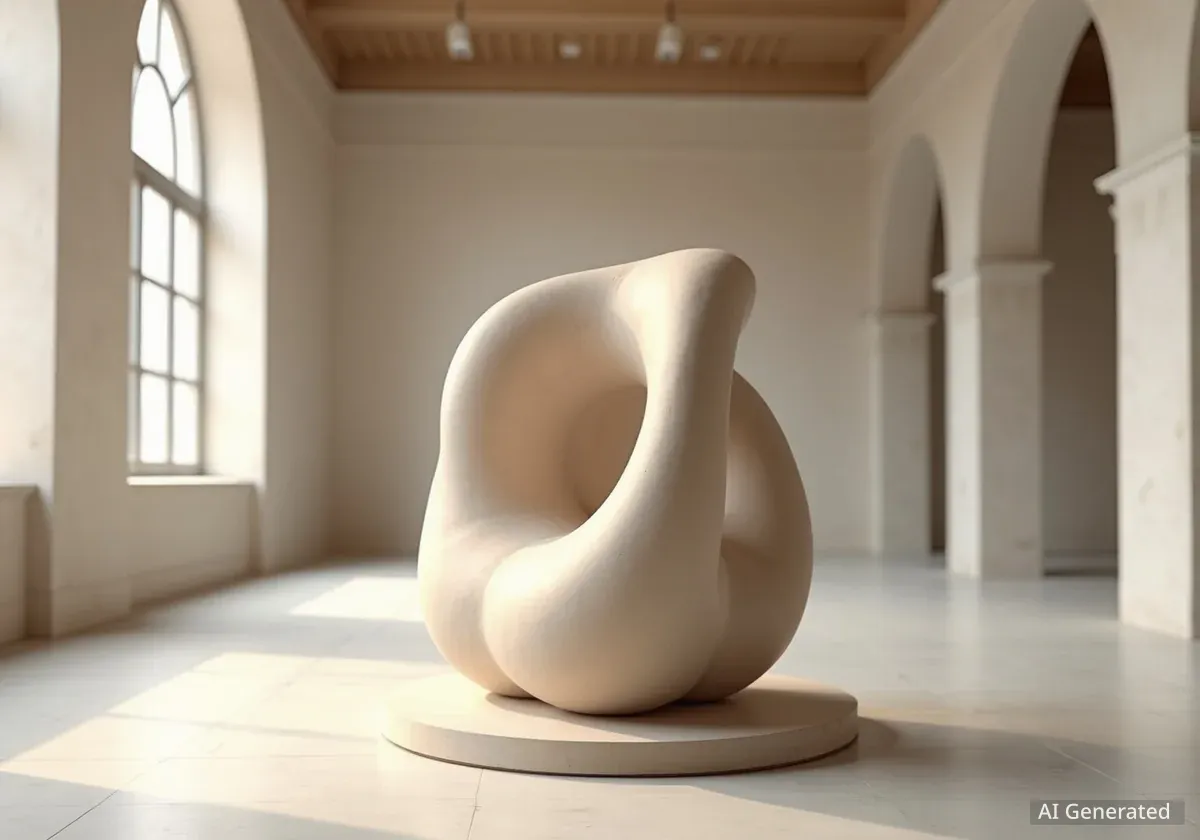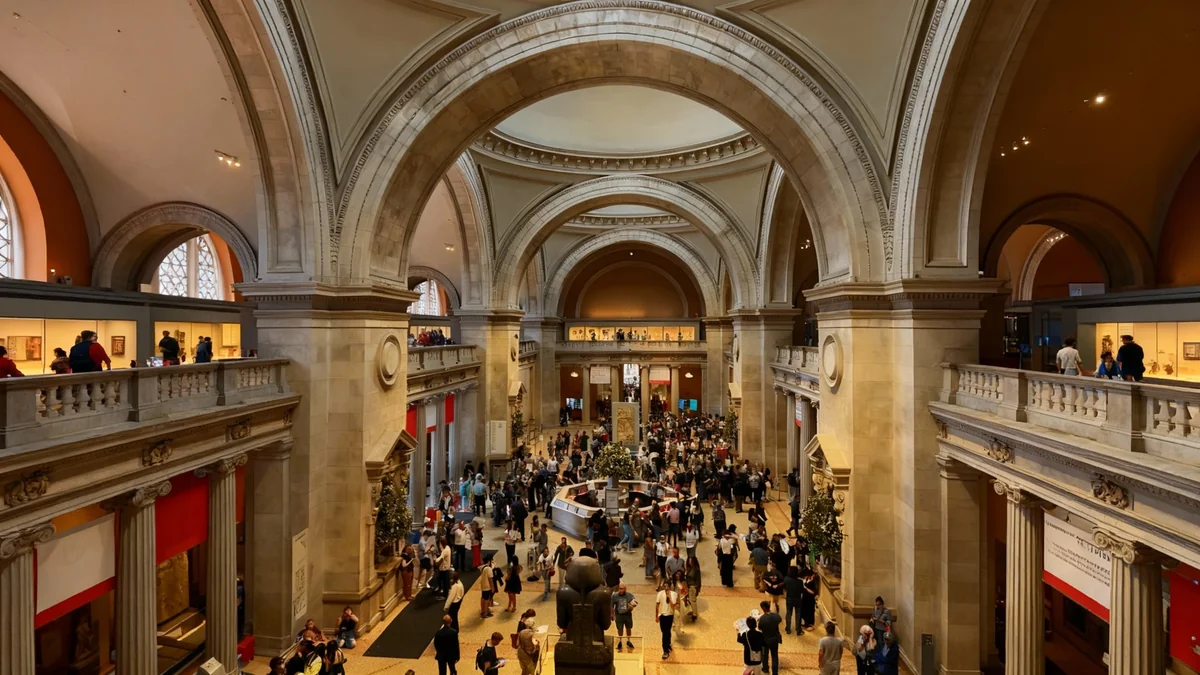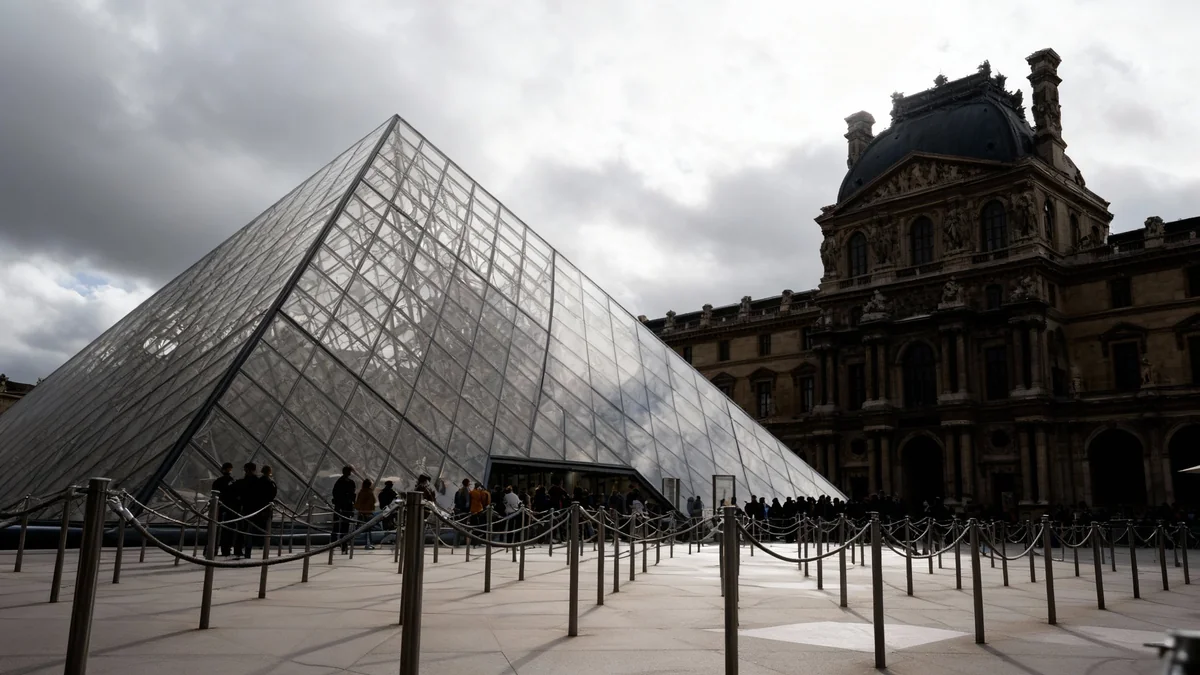The 2025 ArtPrize grand prize winner, a large glass tapestry, remains inaccessible to the public and its creator. This situation is due to the ongoing federal government shutdown, which has closed the Gerald R. Ford Presidential Museum in Grand Rapids, Michigan. The closure has prevented the artist from fully celebrating his achievement and showcasing the artwork.
Key Takeaways
- ArtPrize 2025 winning artwork, 'Arras,' is locked inside the Gerald R. Ford Presidential Museum.
- The museum's closure stems from the ninth day of a federal government shutdown.
- Artist Mark Lewanski spent six months creating the ten-foot-wide glass tapestry.
- The shutdown denied Lewanski and the public the opportunity to celebrate the win.
- Lewanski plans to move the piece to a local gallery once the museum reopens.
Federal Shutdown Affects ArtPrize Winner
The federal government shutdown entered its ninth day on Thursday, October 10, 2025. This has led to the closure of all federal institutions, including the Gerald R. Ford Presidential Museum. The museum was the exhibition venue for the winning entry of this year's ArtPrize competition.
The closure means the winning artwork, a ten-foot-wide glass tapestry titled 'Arras,' cannot be seen. Its creator, Mark Lewanski, has also been unable to access or display his piece since winning the prestigious art competition days ago.
ArtPrize Fact
ArtPrize is an international art competition held annually in Grand Rapids, Michigan. It is known for its unique format where the public and critics vote on the winning artworks displayed in various venues across the city.
Artist Expresses Disappointment
Mark Lewanski, the artist behind 'Arras,' shared his frustration regarding the situation. He invested considerable time and effort into creating the winning piece. The installation itself took three days to complete inside the museum.
"We've lost the opportunity and kind of miss that feeling of saying here this is the winner. This is the one everyone voted for, what do you think and it was kind of like doing a victory lap and I was denied that. A lot of people were denied of seeing the winner on Saturday," Lewanski stated.
The timing of the shutdown could not have been worse for Lewanski. It coincided with the crucial period immediately following the announcement of the ArtPrize winner. This is when public interest and media attention are typically at their highest.
The Creation of 'Arras'
Lewanski's 'Arras' is a significant artistic achievement. The glass tapestry measures ten feet wide, making it a substantial work of art. The artist dedicated approximately six months to its creation, a testament to the intricate nature of the glass medium.
Installing such a large and delicate piece required careful planning and execution. It took three days for the team to safely position 'Arras' within the Gerald R. Ford Presidential Museum. This extensive process highlights the commitment involved in bringing the artwork to public view.
Understanding Government Shutdowns
A federal government shutdown occurs when Congress fails to pass appropriations bills or continuing resolutions to fund government operations. Essential services usually continue, but non-essential agencies, like many museums and national parks, close. This can impact public access to various facilities and services.
Impact on Public Viewing and Artist Recognition
For the final days of the ArtPrize competition, Lewanski was able to display a smaller version of 'Arras.' However, he emphasized that this was not the same experience as seeing the full, winning installation. The public was largely denied the chance to view the actual grand prize artwork.
The ArtPrize competition is designed to engage the public directly. Voters cast ballots for their favorite pieces, making the public viewing experience central to the event's success. The shutdown disrupted this interaction for the winning piece.
This situation also affects the artist's opportunity for recognition. A victory lap, as Lewanski described it, allows the artist to connect with the audience and receive immediate feedback on their celebrated work. This vital interaction was lost.
Future Plans for the Artwork
Once the Gerald R. Ford Presidential Museum reopens, Lewanski intends to move 'Arras' from its current location. He plans to transport the large glass tapestry to a local gallery. This will provide an opportunity for the public to finally view the award-winning artwork.
Following its exhibition at a local gallery, Lewanski stated his intention to put the piece up for sale. This move marks the next phase for 'Arras' after its unexpected confinement. The artist hopes to find a new home for the significant work.
Museum Operations
The Gerald R. Ford Presidential Museum is part of the National Archives and Records Administration (NARA), a federal agency. During a government shutdown, NARA facilities typically close to the public, impacting researchers, visitors, and events scheduled within their venues.
Community and Art World Response
The news of the winning piece being inaccessible has generated discussions within the art community. Many expressed sympathy for Lewanski and frustration over the broader implications of the government shutdown on cultural institutions. ArtPrize organizers have not yet released a statement on the specific impact on the winning artwork's post-competition display.
Local art enthusiasts and visitors to Grand Rapids had looked forward to seeing the acclaimed piece. The inability to do so highlights how political events can unexpectedly affect cultural and community activities.
The incident serves as a reminder of the interconnectedness of different sectors. A federal political impasse directly influenced a local art event, preventing the full celebration of artistic achievement and public engagement.
